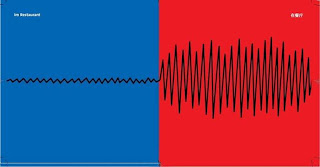

Demographic trends reflect dramatic increases not only in the proportions of older people in the total population but also in life expectancy. These trends will result in changes in the age structure of the workforce. In developing countries, the rates of participation of 60- to 64-year-old men in the workforce tend to be much higher than in industrialized countries. In addition, many developing countries are experiencing the effects of rapid urbanization and modernization together with related socio-economic and cultural changes. In the migration from rural to urban areas, the elderly are often left behind, and if they move, the elderly are often more likely to encounter difficulties in adapting to the new conditions than their younger counterparts.
Ageing and urbanization: The case of the Philippines
Like many developing countries, the Philippines is experiencing both rapid urbanization and an increasing number of elderly people. The census projected the median age to increase to 19.5 years and life expectancy to increase to 63 years by the year 2000. About 2.2 million people (3% of the population) are over 65, and the United Nations Economic and Social Commission for Asia and the Pacific has projected that this number will increase to 2.8 million by the year 2000. As the elderly population increases, particularly in the urban poor sector, there are several implications in regard to the country’s response to their needs. Paguio has pointed out inadequate provisions for meeting the needs of the elderly, including inadequacies in health facilities, specialized training of health personnel to manage the sick elderly, geriatric clinics in urban centres, homes for the abandoned elderly, social security provisions, implementation of social regulations for the elderly, and recreational facilities.
Surveys have shown that the elderly in the Philippines are at risk for malnutrition and specific nutrient deficiency disorders. Nutritional anaemia was found in 25% of the elderly. However, there is still a lack of comprehensive studies of the health and nutritional state and the quality of life of elderly people in the Philippines. The four-country study on ageing in Asia/Oceania, in which the Philippines participated, underscored the need to emphasize policy and programme development that recognizes the positive characteristics of the ageing population- their physical and mental capabilities and their contribution to the family and community.
(Overview of ageing, urbanization, and nutrition in developing countries and the development of the reconnaissance project - http://www.unu.edu/Unupress/food/V183e/ch03.htm)
Social and economic implications of population aging
These include demand for health services, long-term care requirements, changes in family support, needs for social security and welfare benefits, and the special vulnerabilities of older persons arising from the AIDS epidemic, conflict situations and emergencies (such as natural disasters). Population aging affects many aspects of life, for old and young persons alike, the recommendations span a wide range of issues. Taken together, they provide a solid rationale for the need to mainstream population aging into development policies, programmes and strategies.
Although it tends to characterize family support as being in decline, citing reductions of co-residence with adult children as evidence, it also recognizes that in many settings in the region, the shift has been modest and that traditional family ties largely remain strong. An important point is that technological change, particularly in communications and transportation, allows family members to maintain relationships and crucial services over a geographical distance that previously required co-residence or physical proximity. A recent research in Thailand has revealed, the advent of mobile phones has radically improved the extent to which contact and social support are maintained between elderly parents and their adult children who live away.
At the same time, advances in transportation have facilitated migrant children’s return in times of urgent need, while financial support across almost any distance has been facilitated by instantaneous electronic transfers of remittances. Thus, the significance and meaning of living arrangements for the welfare of elderly parents are being transformed as a result.
(Population Ageing in East and South-East Asia: Current Situation and Emerging Challenges
Asia-Pacific Population Journal, Vol. 21, No. 3 - http://cst.bangkok.unfpa.org/docs/bkbookreview.pdf)
More on Ageing of Rural Populations in South-East and East Asia
http://www.fao.org/sd/wpdirect/WPan0028.htm



 (global distribution of onchocerciasis)
(global distribution of onchocerciasis)

















